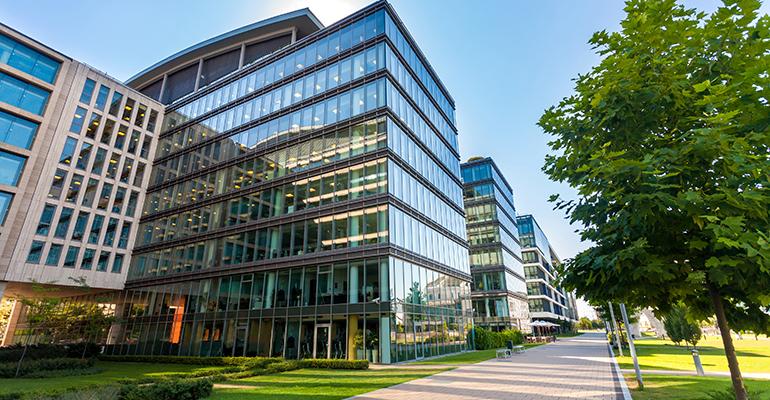With office occupancy rates steadily rising and asset prices reaching new highs, investors are looking for the next best bet for office investment, especially in high-demand central business district (CBD) markets. However, according to a recent report by JLL, office vacancies rose to 14.9 percent by the end of 2017, and are expected to reach an even higher percentage by the end of 2019. Obviously, traditional investment in high-rise office product is no longer the strongest opportunity for investors.
With high prices and vacancies on their minds, many investors are turning away from high-rise office investment and increasingly looking toward mid-rise properties as the future of office investment. As an office investor with over 20 years of experience, we have compiled the top drivers behind increased investor activity in the mid-rise office market.
More cost-effective for both investors and tenants
As office prices peak for investors, costs to tenants have also reached an all-time high. Rising costs are making it increasingly difficult to both invest in and rent office space. However, many investors and renters do not want to be priced out of CBD markets. Mid-rise office assets provide an increasingly cost-effective option for investors and tenants in urban core areas.
For example, in 2016 Olive Hill Group purchased two five-story buildings in Culver City, Calif. for $317 per sq. ft., while high-rise counterparts were purchased for upwards of $1,000 a sq. ft. The more cost-effective pricing also means that the tenants that so desperately need office space in urban core markets have access to a more value-conscious option, increasing demand for mid-rise product.
Lower prices mean potential for higher yields and investor returns. As more and more tenants are drawn to mid-size product and demand increases, the potential upside of these properties will also increase. Ultimately, with high demand from tenants for this type of office building, mid-size product allows strong returns for office investors.
Better suited for creative office and other amenities
Because of the increasing demand for creative office and co-working space, today’s office owners and investors can charge premium rents for office spaces that offer the latest and greatest in creative office and co-working amenities. Many of these amenities are much better suited for low- to mid-size office product rather than high-rise office buildings.
The office campus type feel that many companies and firms look for in their office space is essentially impossible at a high-rise building. Examples of such amenities include outdoor co-working spaces, bocce ball courts and barbeque areas. These outdoor amenities are often located on the ground floor. In a high-rise, these amenities become exponentially more difficult and less convenient to access for a tenant on the 25th floor.
Renovations to turn a property into creative office space can become increasingly time-consuming and costly at a high-rise development. For example, we began a $1.5 million redevelopment project at the Culver City properties in the summer of 2017 and had completed these renovations by the end of the year. With such a quick turnaround on renovations, office owners and investors can quickly lease up the redeveloped property and charge premium rents.
Community creation and inter-office connections
Smaller office product is also simply easier to manage and to create a sense of community in. By fostering this feeling of a tight-knit office community between tenants, owners can foster loyalty to a property, which increases tenant retention and NOI. This interaction between multiple companies and firms leasing office space at the same property is virtually impossible to achieve at a high-rise development. As this demand for inter-office connections and for the community feel becomes increasingly popular, more and more office investors will turn to mid-rise properties as the best product for providing this environment.
For example, at The Olive, a mid-rise property we own in Downtown Los Angeles’ Jewelry District, we have created a unique sense of community amongst the tenants due to the unique combination of tech and media tenants and jewelry tenants. We even made this property our corporate headquarters because of its amenities, location and strong sense of community. With less than 10 floors it is easy for tenants to get to know their neighbor.
Ultimately, office investors are looking for the strongest and most stable investment opportunities as the cycle matures. With evolving tenant demands and expectations of office space, mid-rise truly offers investors attractive returns and higher yields.
Tim Lee serves as the vice president of corporate development and legal affairs at Olive Hill Group, a privately-owned investor, operator and developer of commercial real estate properties with a portfolio of office, retail, hospitality and multifamily properties.





